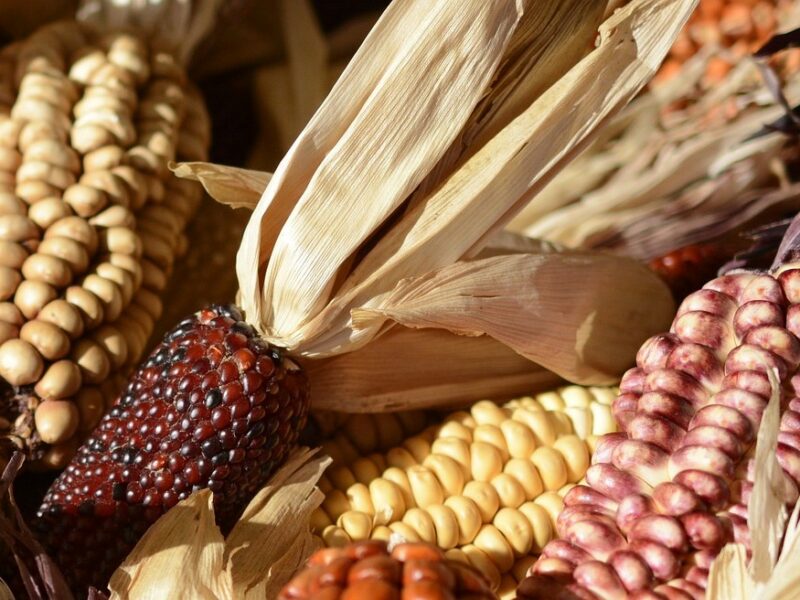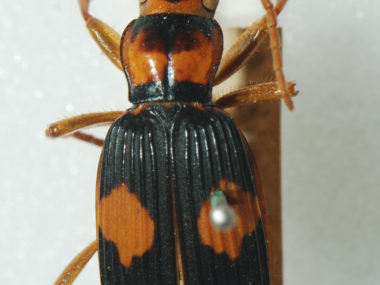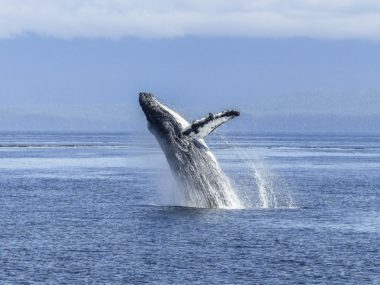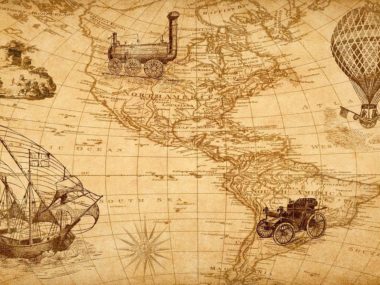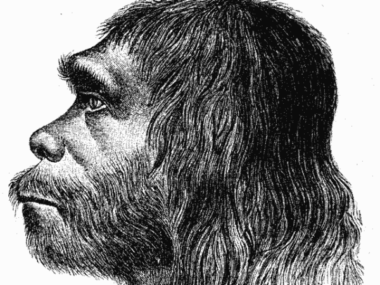On a cold December day in 1620, the Mayflower arrived in Plymouth Harbor, Massachusetts. Several days later, the men came ashore and began to build a common house. Over the course of the freezing winter, many challenges presented themselves, including starvation, exposure, scurvy, and other diseases. Almost half of the colonists died that winter.
The views expressed reflect those of the author, not necessarily those of New Creation.
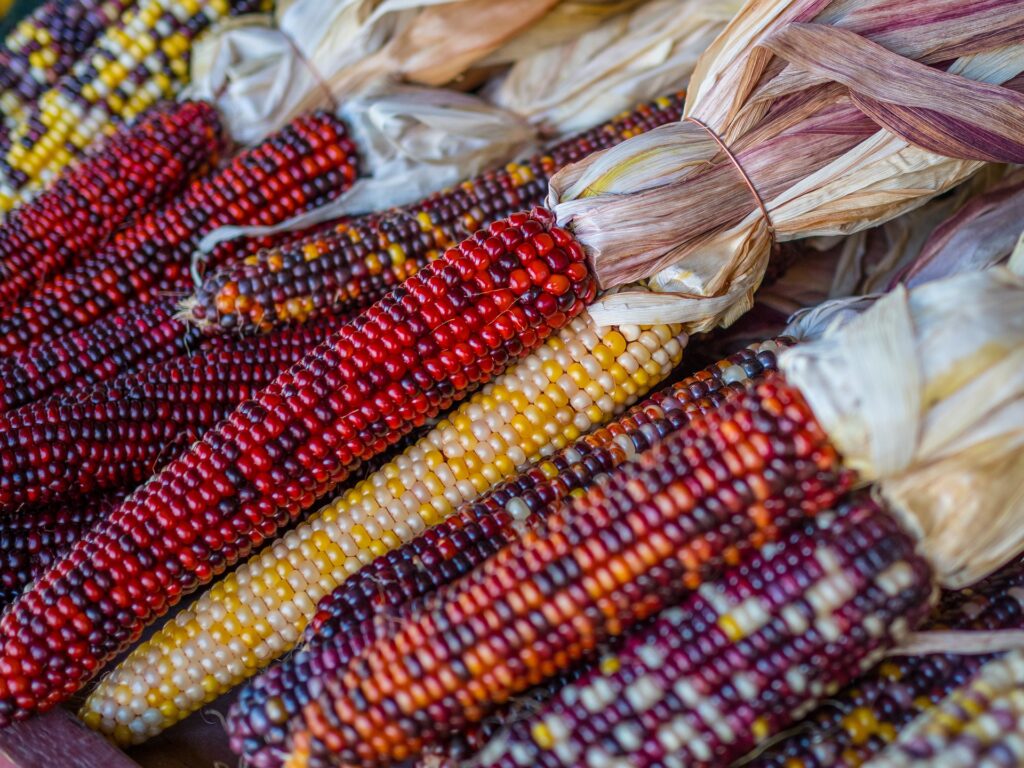
Early the next spring, the pilgrims made a treaty with the local Wampanoag tribe. They also met Squanto. As a young man, he had been kidnapped and taken to Spain, where he was sold as a slave. Eventually, Squanto was freed by Spanish monks, and traveled back to the New World as an interpreter. He returned to find that a disease had killed his entire tribe, the Patuxet. Squanto was invaluable to the colonists, teaching them how to fish, collect eels, and trade for beaver pelts. He also showed them how to plant corn, with dead fish as fertilizer. Due to Squanto’s help, the colony had an abundant corn harvest that Fall. They used this corn to make cornbread and corn porridge, which were staples of the Indian diet. Out of gratitude the colonists held a feast with the Wampanoag: the first Thanksgiving.
We still associate corn with Thanksgiving today. Many people use the multi colored cobs of Indian corn as decorations. For Thanksgiving dinner we often eat corn, either on the cob or in cornbread. Creation research has shown that corn is probably related to a surprising number of other plants. This suggests that there was a period of rapid biological change following the Flood.
Corn and the Modern Diet
Corn is a major part of the modern diet. I always enjoy corn on the cob. First, I butter it and then sprinkle on a good amount of salt. Corn bread is delicious too, especially with some maple syrup poured on top. The average American consumes over forty pounds of high fructose corn syrup every year!1 Corn syrup is a commonly used sweetener in many types of foods and drinks. That cereal you ate for breakfast probably contained corn syrup. The bread from your sandwich likely had corn syrup in it too. And, unless you drink those weird tasting zero sugar sodas, you have been gulping down corn syrup in yet another form. Unsurprisingly, corn was also a staple ingredient in ancient times.
Ancient Domestication/Use of Corn
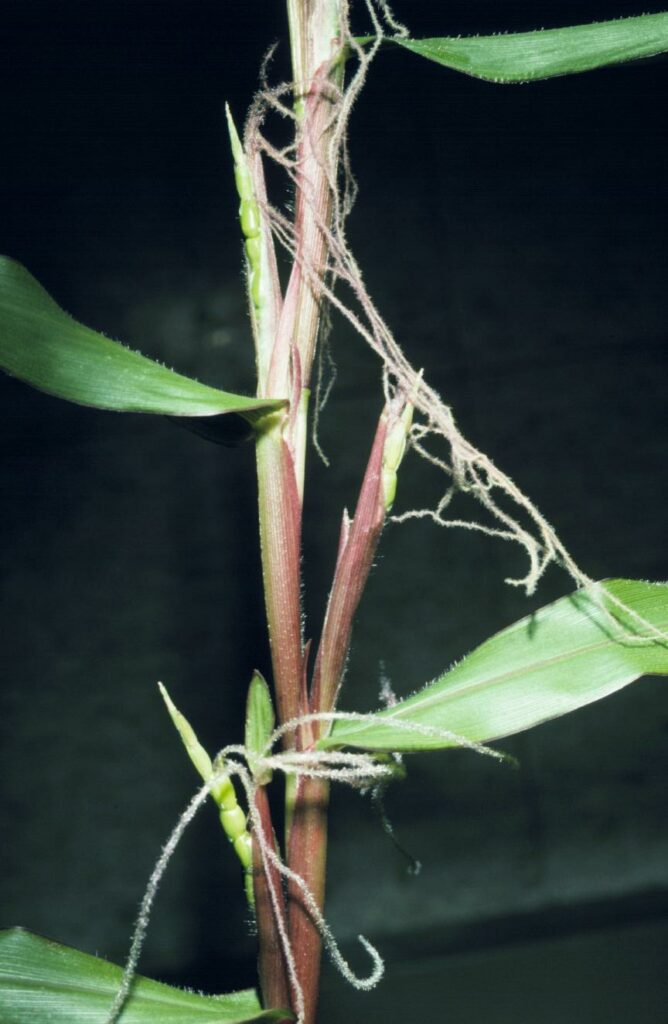
By the time the Mayflower arrived, the native Americans had already been eating corn for thousands of years. It may have originally been domesticated in Mexico, from a wild grass called teosinte.2 Visually, teosinte looks somewhat similar to corn. It has long, green leaves and yellow tassels. But unlike corn, teosinte has multiple different branches, giving it a bush-like appearance. It produces a small head which contains a few, hard kernels. The Indigenous Peoples of Mexico selectively bred teosinte to increase the size of its kernels.
Studies of plant kinds suggest that teosinte may actually be related to wheat, rice, barley, sorghum, sugarcane, bamboo, and even the grass growing in your lawn!3 In fact, the grass kind may encompass more than 10,000 different species. This raises the question: how could so many different species of grass originate from a single created kind in the six thousand years since creation?
On the Origin of Grasses
To answer this question, we first need to consider the original diversity of the grass kind. When God made the grasses, He probably did not create a single uniform type of grass across the globe. It is likely that He made multiple different types of grasses which could all hybridize. Surprisingly, grasses seem to have been relatively rare in the pre Flood world. The pre Flood landscape was probably dominated by various types of ferns, mosses and horsetails. In fact, grasses do not appear in the fossil record until layers deposited near the end of the Flood!
Multiple lineages of the grass kind might have survived the Flood. Some may have been brought aboard the ark in the form of seed. Others might have happened to survive by floating on mats of vegetation. The Flood brought an abrupt end to the predominantly warm, wet climate which had existed beforehand. Grasses took advantage of this climatic shift and seized their chance at world dominance. They quickly spread through cool, dry areas where other types of ground cover failed to take hold. The grasses rapidly adapted to new environments, creating new species. However, speciation must have happened at a much faster rate than we usually observe in the present. How were these grasses able to change so quickly?
McClintock and the Movable Genes
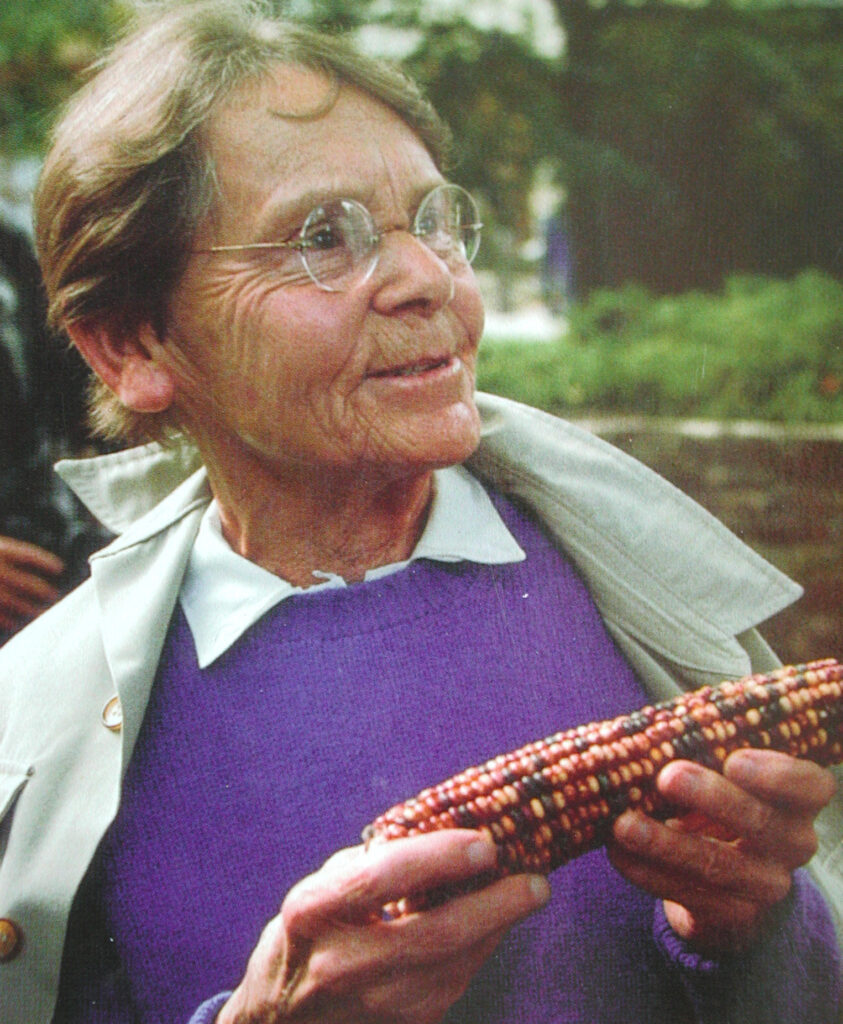
Barbara McClintock discovered transposable elements in the 1940’s.4 At the time, McClintock was a geneticist studying the maize genome. The variety of colors produced in cobs of Indian corn particularly fascinated her. To study the genetic mechanisms of coloration, she raised corn and self pollinated it. Since each corn plant has both male and female organs, it can fertilize itself. All the genetic information in the kernels came from one parent, not two. Despite having been raised from a singular kernel of a specific color, the plant still produced multi-colored cobs.
McClintock went on to sequence the genes responsible for kernel coloration. To her surprise, she found that these genes were not always in the same place in the genome. Most genes stay in the same place in the strand of DNA. These genes moved from generation to generation. When they moved, the genes changed the colors of the corn kernels. It turned out that movement caused mutations or changed how often the genes were used. As a result, new colors and patterns could suddenly appear in each generation. We now call these movable genes transposable elements.
What Are Transposable Elements?
Transposable elements (or TE’s) are relatively short sequences of DNA, usually between 100 and 100,000 base pairs in length. On either end, TE’s have repetitive sequences. In between these repeats is a region which can contain genes, sequences of DNA that “code” for the production of proteins. Transposable elements can make up a significant fraction of an organism’s genome. In fact, 65% of the corn genome consists of TE’s!5
Transposable elements can be grouped into two broad categories based on the way in which they move.6 Retrotransposons are transposable elements which reproduce themselves by making a corresponding sequence. In this method of replication, the original transposon stays in place, but an additional copy is inserted elsewhere in the genome. This is sometimes referred to as a “copy and paste” mechanism. DNA transposons move by excising themselves. They are able to create proteins which cut them out of the strand of DNA and roll them up into a loop. This loop can then insert into a different place. DNA transposons are said to move in a “cut and paste” mechanism. The original sequence moves to a new place, as opposed to a copy of it. Some creation scientists believe that transposable elements may have played an important role in the diversification of life after the Flood.7 There are four main ways in which transposons could help create genetic diversity:
1. Gene Regulation
First, transposable elements can regulate genes.8 Not all of the roughly one hundred thousand genes in your genome are always in use. Certain genes are much more important in the daily life of the cell than others. Cells use various means to control which genes are actively being “read” and made into proteins. If a certain protein needs to be made, the cell can attach a particular chemical to the promoter region of the gene which codes for that protein. This brings about a change in shape which allows protein machinery to bind to the promoter region and then “read” the DNA sequence. Transposable elements can also play a role in the regulation of genes. They are able to insert themselves upstream from a gene, carrying enhancers or promoters. So, TE’s can cause particular proteins to be made with greater frequency. TE’s can also remove regulatory sequences, resulting in less proteins being made.
2. Gene Duplication and Movement
Second, transposable elements can move and duplicate genes. As mentioned earlier, most genes stay in a single place in the genome. However, when TE’s move, they can sometimes move surrounding genes with them. They are also able to create additional copies of the surrounding genes, rather than move them.
3. Targeted Mutations
Third, transposable elements can cause targeted mutations. TE’s do not always move randomly throughout the genome. Some TE’s have an affinity for particular genes.9 This means that they will often try to insert themselves in the same place. However, when they insert themselves, they can damage and mutate the surrounding DNA. Since TE’s can have an affinity for a particular DNA sequence, and a tendency to cause mutations, they are able to repeatedly cause mutations at a particular site.
4. Recombination
Fourth, different transposable elements can either be sites for recombination, or prevent it.10 When a cell is about to replicate, the DNA bundles up into large structures called chromosomes. Each chromosome contains two copies of the DNA. When the cell divides, the chromosome splits in two and each of the daughter cells receives a single copy. Sometimes, when the cell is replicating, the chromosomes can intertwine and exchange DNA. We call this a crossing over event or recombination. Both halves of the chromosome contain the same genes, but can have slightly different versions of them. So, recombination switches mostly identical sequences between the two arms of the chromosome. However, this has the effect of producing different combinations of gene variants within the offspring. Some types of transposons seem to be the target sites for recombination. The cell avoids recombining around other types of transposons.
Conclusion
Transposable elements may be the key to understanding rapid diversification. However, significant questions still remain: Why do transposons move in the first place? Why do transposons have similar sequences across created kinds? I hope that further research will continue to illuminate our understanding of transposable elements and their role in God’s creation.
We at the New Creation Blog wish you a very happy Thanksgiving!
Footnotes:
- Parker, K., Salas, M., Nwosu, V. 2010. High fructose corn syrup: Production, uses and public health concerns. Biotechnology and Molecular Biology Review, Vol. 5(5), pp. 71 – 78. ↩︎
- Matsuoka, Y., et al. 2002. A single domestication for maize shown by multilocus microsatellite genotyping. PNAS, 99 (9) 6080-6084. ↩︎
- Wood, T.C. 2002. A baraminology tutorial with examples from the grasses (Poaceae). TJ 16:15-25. ↩︎
- Fedoroff, N. 1984. Transposable Genetic Elements in Maize. Scientific American, Vol. 250, No. 6, pp. 84-99. ↩︎
- Qiu, Y., et al. 2021. Whole-genome variation of transposable element insertions in a maize diversity panel. G3, 11(10), jkab238. ↩︎
- Wells, J., Feschotte, C. 2020. A Field Guide to Eukaryotic Transposable Elements. Annu Rev Genet, 54: 539-561. ↩︎
- Wood, T. 2003. Perspectives on Ageing: A Young-Earth Creation Diversification Model. International Conference on Creationism, Vol. 5, pp. 479-490. ↩︎
- Gebrie, A. 2023. Transposable elements as essential elements in the control of gene expression. Mobile DNA, 14:9. ↩︎
- Wu, X., Burgess, S. 2004. Integration target site selection for retroviruses and transposable elements. Cellular and Molecular Life Sciences, 61, 2588-2596. ↩︎
- Underwood, C., Choi, K. 2019. Heterogeneous transposable elements as silencers, enhancers and targets of meiotic recombination. Chromosoma, 128, 279-296. ↩︎

